
Oh Hello!
We want you to be the first to know about our exclusive new products and promotions.
Enter your email below
to receive a coupon code for 15% off you first order
American candy history is brimming over with glorious confectionery creations and interesting backstories. We’ve considered views of revered experts and candy historians to put together a list of iconic American candies that have made a huge impact on the American candy industry and candy fanatics, the world over. As with any list like this, there’s a lot of debate, there are omissions, there are candies that people may not feel deserve a place in the roll of honour but these USA candies truly are icons in their own right …
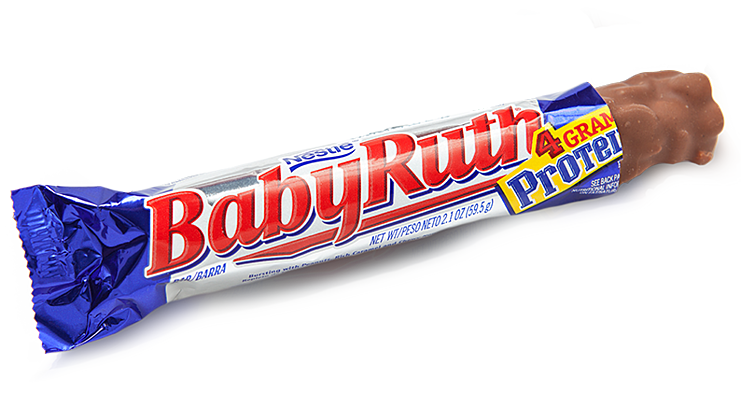
Baby Ruth is an American candy bar bursting with peanuts, rich caramel and chewy milk chocolate flavoured nougat covered in compound chocolate. Today, Baby Ruth is distributed by the Ferrara Candy Company, a subsidiary of Ferrero but it has a very long history, way back to 1921 when the Curtiss Candy Company refashioned its Kandy Kake into the Baby Ruth. In the 1920s, the Baby Ruth reached the heights of popularity becoming the best selling confection in the 5 cents category.
The original Baby Ruth factory was located on Illinois St. in Chicago in the Streeterville neighbourhood.
There has been considerable controversy over the origins of the name, Baby Ruth. Some have claimed that the bar was cunningly named to cash in on the fame of the huge New York Yankees baseball star, Babe Ruth without an official endorsement. Arguably, this was the first candy bar to profit from an association with a successful, famous public figure, even though Babe Ruth was never compensated.
In answer to rumours, Curtiss Candy Company claimed Baby Ruth was named after President Grover Cleveland's daughter, Ruth who had died 17 years earlier at the tender age of just 12. The child was endearingly referred to as 'Baby Ruth'.
The Baby Ruth swiftly not only gained in popularity due to its desirable taste as well as incredible publicity stunts. One such marketing stunt was the 1923 parachute-drop of individual bars over Pittsburgh organised by the company founder, Otto Schering. Parachuting individual bars proved so successful, the exercise was repeated in various cities in over 40 US states.
The Baby Ruth Chocolate Bar is one of the all time American confectionery greats. Nestlé purchased the Baby Ruth candy bar in 1990.
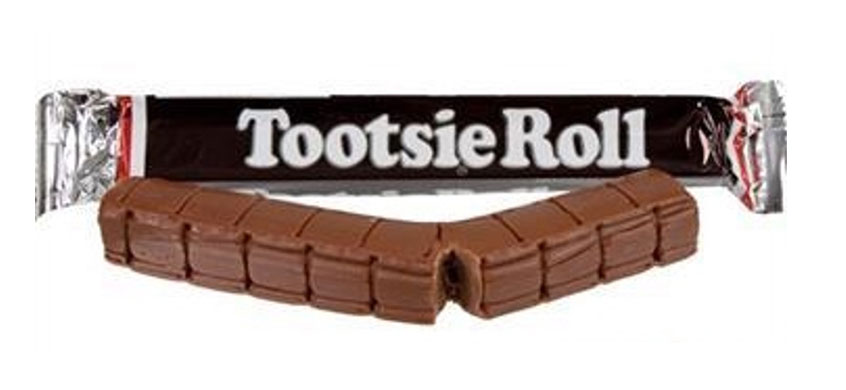
Tootsie Roll - the iconic treat that launched America's now legendary candy company. Tootsie Roll offers a perfectly balanced cocoa taste, lined with a subtle, fruit flavored undertone. This is the number one selling chewy candy in the USA and has been made to the same exacting recipe since 1896 when the Austrian born immigrant, Leo Hirshfield, introduced an individually wrapped, oblong shaped, chewy chocolate candy in his tiny candy shop in New York City. The candy, sold at a penny a piece, was affectionately named after Hirshfield's five-year old daughter, Clara, whose nickname was Tootsie. The Tootsie Roll propelled Hirshfield's modest corner store career and formed the platform for the now multinational corporation, Tootsie Roll Industries, produces some of some of the world's most popular candy.
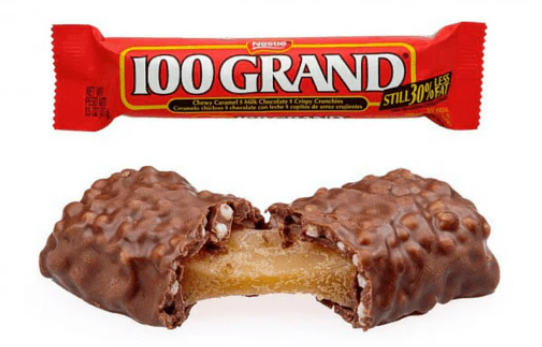
The 100 Grand Bar (formerly known as $100,000 Bar until the mid 1980s) is a candy bar produced by Nestle in the United States. The candy bar was created in 1966 and named after a series of successful game shows.
It weighs 1.5 ounces (42 grams) and consists of chocolate, caramel and crisped rice.
The bar contains 190 calories; it is low in cholesterol and sodium. Its slogan is "That's Rich!"
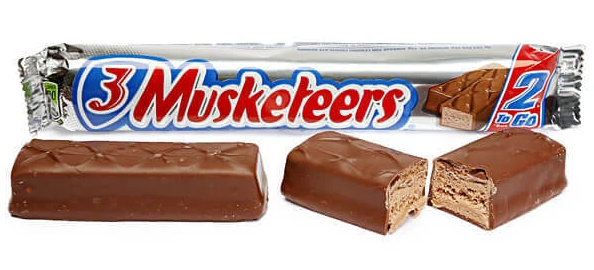
An all-time classic candy bar introduced in the United States in 1932, the 3 Musketeers is a rather substantial milk chocolate covered fluffy whipped candy bar. Originally 3 Musketeers bars consisted of three pieces: chocolate, strawberry and vanilla, hence the 3 Musketeers name.
Chocolate proved to be the most popular and the other two flavors were phased out due to rising costs and wartime restrictions.
Costing five cents when it was introduced, it was marketed as one of the largest chocolate bars available, one that could be shared by friends.
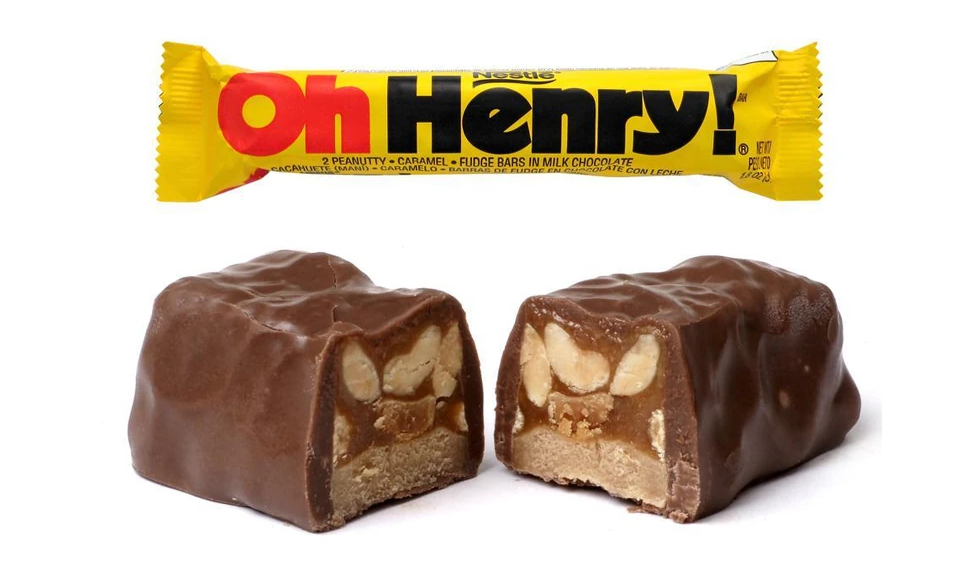
A delicious candy bar containing peanuts, caramel and fudge coated in velvety chocolate. Originally introduced in 1920 by the Williamson Candy Company, Illinois, the Oh Henry! is a wonderfully rich, classic American candy bar.
The origin of the name is still a mystery to this day. It could be a homage to a young man who frequented the Williamson company flirting with the candy girls. It also may be a reference to the writer, O. Henry or a tribute to Tom Henry of Arkansas City, Kansas who invented the recipe while running the Peerless Candy Factory in 1919.
In 1923, an employee of Williamson, John Glossinger, announced that he was going to make the bar popular. Refused an advertising budget, he went out and placed stickers on car bumpers to create a buzz.
It was a piece of marketing genius and signaled the initial interest in these fabulous candy bars from the USA. Of course, once people tasted the bar, there was no looking back. The rest is history, as they say...
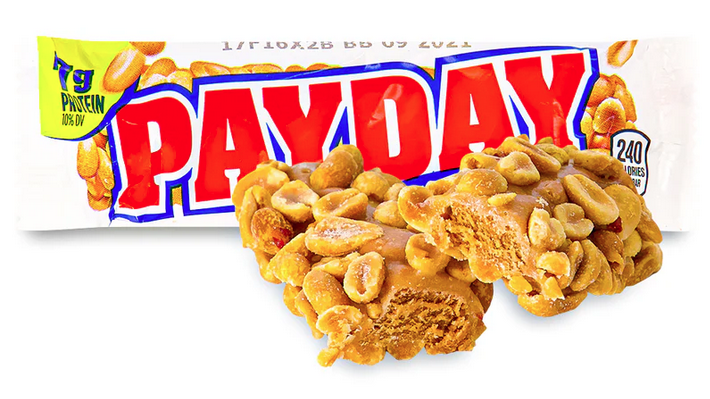
Payday was first introduced in 1932 by Frank Martoccio who founded the F.A. Martoccio Marconi Company. The Payday bar is a candy bar consisting of salted peanuts and indulgent crispy peanut fudge candy around an indulgent caramel core.
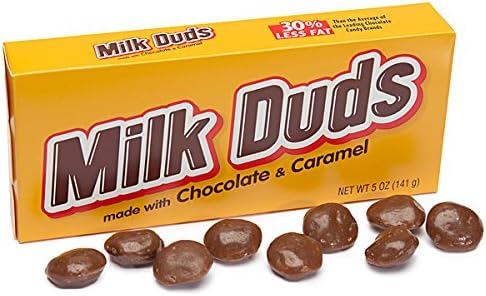
Milk duds are a classic American caramel candy, enrobed in a chocolate flavoured candy coating. Milk Duds were first created in 1926 by S. le Noble.
According to The Hershey Company, the word Milk in the name refers to the large amount of milk in the product; the use of Duds came about because the original aim of having a perfectly round piece was found to be impossible and the misshapen candy pieces were in effect considered a mistake.. What a wonderful mistake to make...

Butterfinger was invented by the Curtiss Candy Company of Chicago, Illinois in 1923. The name was the result if a public contest.
In a remarkable publicity stunt, the company dropped Butterfinger and Baby Ruth Candy Bars from airplanes in cities across the United States which gained the bar incredible popularity from its ground- breaking 1923 launch. The rest is history...
Each Nestlé Butterfinger consists of a flaky, crisp caramel textured orange-coloured centre with a distinctive sweet, peanut buttery taste. Butterfinger are a sumptuous crispy, crunchy, peanut buttery feast encased in a creamy chocolate coating and arguably the ultimate chocolate bar for peanut butter fans.

Jaw Busters were once called jawbreakers. The jawbreaker was made famous by the Ferrara Pan Candy Company of Forest Park, Illinois. The origin of the name however remains obscure.
The Ferrara Pan sweet company was founded by an Italian immigrant to the United States, Salvatore Ferrara, in 1919. Ferrara arrived in the United States in 1900. Though he was a skilled confectioner, for years he worked various odd jobs, including a role as a dishwasher and as a railroad foreman.
Eventually, he saved up enough money to open his own pastry shop in Chicago in 1908. In 1919, Ferrara teamed up with his two brothers-in-law, and founded the Ferrara Pan Candy Company.
The new corporation focused on making candies in the hot pan and cold pan process. Ferrara Pan produced many well-known confections, including Boston Baked Beans and Red Hots.
There are many manufacturers of jawbreakers today, though Ferrara Pan remains the leading maker of hot pan candies in the world.
These mouth-watering, tasty jawbreakers are little hard candy balls that change colour and flavour as you eat them. You can enjoy these hard candy treats for hours on end and they are tasty throughout. Each box of Jaw buster breaker jawbreakers have 5 fruity flavours and are a fat free treat.
There's no surprise Jaw Busters take so long to eat; they take between 14 and 19 days to make in large rotating heated pans. During the hot panning process, sugar is slowly crystallized into balls that grow into jawbreakers. When you taste these delicious jawbreakers, you'll understand why so much effort goes into their production.
Hard candies are favourite choices among candy lovers because they take longer to eat than soft candies and the delicious taste sensation just goes on and on with these all day suckers. Jaw Busters are one of the all-time USA hard candy favourites.
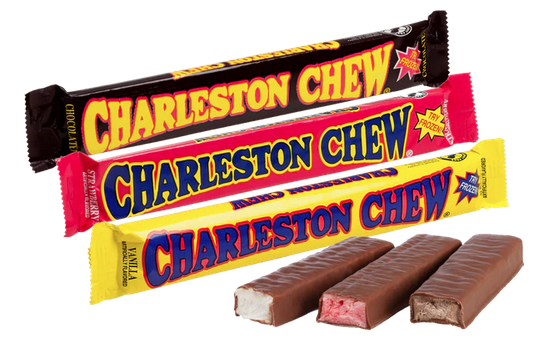
An all time classic American candy bar consisting of chewy flavored nougat covered in a chocolate flavor coating. The original chocolate coated vanilla taffy Charleston chew was created in 1922 by the Fox Cross Candy Company and named after the fashionable dance of the roaring 20's era.
The chocolate Charleston Chew was introduced in the 1970s and is an ever popular candy choice - often consumed as a frozen treat giving rise to the classic 'Charleston Chew crack' whereby the bar is easily shattered into small pieces.